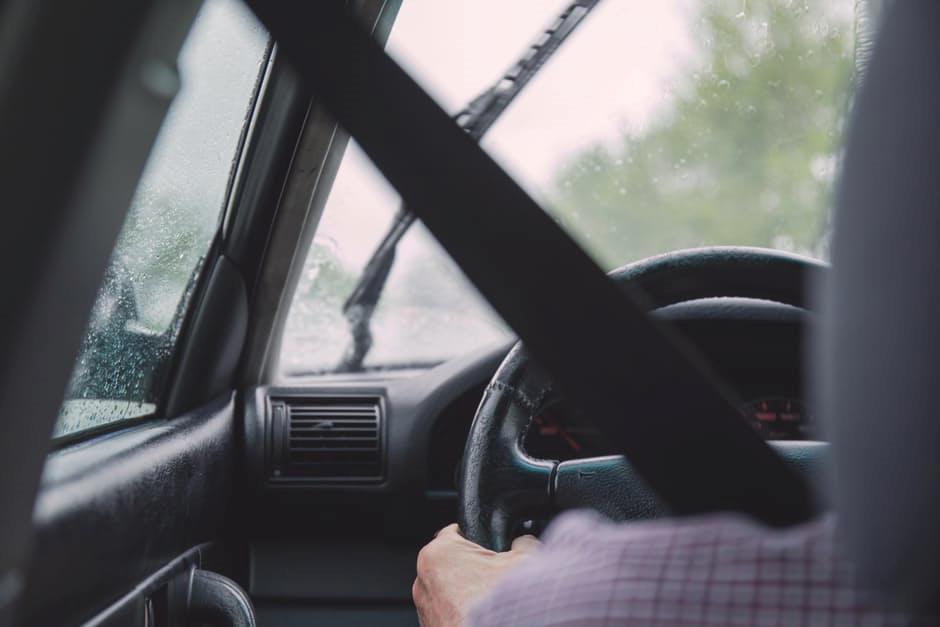It is unfortunately all too common; there are so many car accidents that occur every day. Driving is a livelihood for so many people, but if you have a very bad accident, it can have repercussions, not just on your health, but also your confidence in your ability to drive. It is a massive cliché when people refer to everyone else being reckless, but we are all guilty of it. We’ve all had occasions where we’ve been running late for work, or we’ve had a long day, and we just need to get home, so we think of nothing but ourselves, it is those instances where we are more than likely to cause an accident. If you have had a major accident, getting back behind the wheel can take a long time and a lot of effort, but there are things that you can do to help speed up the process and to get yourself back behind the wheel where you belong, it is all about taking baby steps in the right direction.
https://www.pexels.com/photo/blur-car-caution-dash-163945/
Recovery Rule One: Take It Slow
We are all guilty of being impatient if we want to get back into doing something as quick as possible, especially something like driving where people may be relying on you to help get them around or to make life easier. The weight of expectation that can be placed on a person in this situation can be enough to put them off for life. You need to understand that you’re not superhuman, and these things take time. Taking your driving test was one of the most stressful things you can remember, am I right? By the same logic getting into the driver’s seat is like starting all over again, so you need to give yourself a break and break it down into manageable steps. The point is not to give you undue stress, but merely work up to sitting in the driving seat. The best starting point for this is simple: become a passenger. Depending on the severity of your accident, this is a big step all in itself, so by sitting in the backseat on a short journey, such as to the local supermarket, this will give you a feel for being in a moving vehicle again. As time goes on you can then be a passenger in longer journeys, and when the time feels right, you can move to the passenger seat in the front which is building your ability up in terms of your coping mechanisms. It is a fact that when we break down a big task into smaller chunks we are able to cope better with the assignment itself. So do what makes it less stressful for you, make a list of things to do and tick them off one by one. But don’t set yourself a deadline; this is yet another way to pile pressure on yourself!
Recovery Rule Two: Getting Closure
For many people, the very notion of achieving closure is what is stopping them from getting back behind the wheel. To achieve closure, there are various things that can be done, one way is to sit down and talk through your issues, either with a professional or by merely speaking to a friend or family member. A problem shared is a problem halved in many circumstances. But if you want to speak to a professional, there are many options for you. You could speak to a counselor, where the environment is incredibly relaxed and non-pressuring. You are encouraged to talk, although it is not about having to lie on a chaise longue and talk about your mother. Counseling is a very different experience to that. We all have different ideas on the topic of closure. For example, if you were involved in an accident that was caused by someone else, an accident that was caused by someone else then actioning legal proceedings may be a logical step to give you the closure you need. You may wish to speak to law firms that specialize in car accidents, from Robins Cloud to A more local firm to you, this can give you the fair outcome that you need, whether this is compensation or if this was caused by a commercial haulage firm, it could be the message that they need to retrain their staff or to communicate better driving practices.
You could also attempt to seek closure by your own means, and there are many ways for you to do this. A lot of people refer to the process of mindfulness now to help people to better equip themselves with any sort of pressure, whether this is from day to day life or any type of anxieties. Getting back behind the wheel comes with its own unique set of anxieties, so by helping with the symptoms to help you better cope with the pressures on the road, this will leave you better equipped to face any challenges that come your way on the road.

Recovery Rule Three: Putting Your Foot Down
Once you have gone as far as you can without being in the driver’s seat, this is the final piece of the puzzle. If you have experienced other people driving as a passenger, you will have likely got to the point where you may want to start driving yourself, quite possibly because of frustration at how much the person is driving like Miss Daisy! If that is the case, that’s great! That means you’re ready to take control again, which is the deciding factor in many people’s choice to get back behind the wheel, especially after an accident that was not your fault. Again, this is a baby step approach. You don’t need to drive 500 miles as soon as you’ve reached the end of the road, bring it back a few steps. Make sure you get used to the feel of the car again. Just sit in the car and get a feel for the pedals or just get your bearings. Once you feel ready, turn the key. For a lot of people, this may be enough to put them back in the right mindset. If you are still feeling tentative about the actual act of driving, again take it slow. No doubt when you were learning to drive, you took little trips around car parks in the middle of the night because it was quiet. do the same again, and as time goes on you can build up your confidence as well as get used to the mechanics of the vehicle and practice parking maneuvers. Once you are ready to get on the road properly, then it is time to start by making small journeys. Like when you were the passenger going on the small journeys to the shops, you can now do this yourself. If you accomplished the small journey without any worries, that’s great, Pat yourself on the back, and if you are feeling up to it make a bigger journey, or make it smaller journey in an area that is more built up. You know that wherever you live, there are roads that are considered to be pains in the unmentionables so you can use them as a final goal in your rehabilitation program. And you know once you have conquered that, and then you are unstoppable. But the notion of baby steps is the most important part. By making each journey more manageable by breaking it down into bite-sized chunks and building up gradually, it is the best way to take the stress off.
Recovery Rule Four: Take Time Away From Driving When You Can
Sometimes, the act of recovery is just as beneficial as the exercise itself. We can get into such a pattern where we are constantly driving and have got back to our old habits. By learning where we go wrong as drivers are what will help us to improve at the end of the day. It seems to be a habit of drivers that we seem to know everything, and we all know this isn’t the case. We all have an opinion about how other people should be driving that we don’t stop to notice our own bad habits. So by taking regular breaks from driving where we can give us the opportunity to stop and assess the situation. The first year after passing your driving test is when you need to be at your most vigilant. Accidents are much more likely to occur in that first 12 months. To an extent, the same applies when getting back onto the road after a long time. Whether we are seventeen or seventy, we can all benefit from fine tuning our skills on the road. All sorts of professional drivers, from truck drivers to ambulance drivers, to bus drivers, they all say that it is a constant learning experience, and these are people that do it every day professionally where most drivers only drive for a short amount of time in comparison. Take that on board, and best of luck with all of your journeys on the road.

